| Nationalism – Nationalism is a belief structure, faith or political ideology that involves a robust identification of a group of individuals with a nation. Imperialism – Imperialism, as defined by the People of Human Geography, is "the formation and/or care of a country's influence and inspiration through military force Treaty of Versailles – This was once of the many treaties that was made up after World War I and stopped the war state from Germany and the Allied Powers. Idealism vs. Realism – An Idealist thinks about how things can or should be like, as a Realist is a person who looks at how things are. Fourteen Points – This was a statement from the United States, about the War and how it was for a good moral. Self-Determination – Ones free will to do good or thrive in something. War Guilt Clause – The war guild clause was a clause that blamed Germany for everything and made them pay reparations. W.C.T.U. – The Woman's Christian Temperance Union (WCTU) was the first mass organization among women devoted to social reform with a program that used Christianity. League of Nations – The League of Nations was an intergovernmental organization founded at the Paris Peace Conference. Collective security – Collective security can be understood as a security arrangement; regional or global, in which each state in the system accepts that the security of one is the concern of all. Woodrow Wilson – He was the 28th president of the United States. Economic Sanctions – Economic sanctions are domestic consequences applied by countries (or just on country) onto another country. Hoare-Laval Plan – The Hoare-Laval Pact was a December 1935 offer by British Foreign Secretary Samuel Hoare and French Prime Minister Pierre Laval for ending the Second Italian-Abyssinian War. The Locarno Pact – The Locarno Treaties were seven agreements exchanged at Locarno, Switzerland, on October 5th –October 16th 1925 and formally signed in London on the 3rd December Kellogg-Briand Pact – The Kellogg–Briand Pact was a 1928 international contract in which signatory states assured they would not to use war to resolve disagreements Washington Conference – The Washington Naval Conference also called the Washington Arms Conference or the Washington Disarmament Conference. Bourgeoisie – Bourgeoisie is a word from the French language, used in the fields of political economy, political philosophy, sociology, and history.(Middle Class) Proletariat – is a term used to identify a lower social class, usually the working class Exploitation – using something in an unjust or cruel manner. Dictatorship of the Proletariat – In Marxist socio-political thought, the dictatorship of the proletariat refers to a socialist state in which the proletariat, or the working class, has control of political power. Cadet – A cadet is a trainee the term is frequently used to refer those training to become an officer in the military. Bolshevik – The Bolsheviks, originally also Bolshevists were a faction of the Marxist Russian Social Democratic Labor Party. Menshevik – The Mensheviks were a faction of the Russian revolutionary movement that emerged in 1904 after a dispute between Vladimir Lenin and Julius Martov. October Manifesto – The October Manifesto officially The Manifesto on the Improvement of the State Order is a document served by the Russian empire. Fundamental Laws – Which transformed the formerly absolutist state into one in which the emperor agreed for the first time to share his autocratic power with a parliament. Duma – The Duma were council assemblies which were created by the Tsar of Russia | 27) Provisional Government: is an emergency or interim government set up when a political void has been created by the collapse of a very large government. The early provisional governments were created to prepare for the return of royal rule. 28) V.I. Lenin: Russian founder of the Bolsheviks and leader of the Russian Revolution and first head of the USSR (1870-1924). 29) Russian leader who succeeded Lenin as head of the Communist Party and created a totalitarian state by purging all opposition (1879-1953). 30) Russian revolutionary and Communist theorist who helped Lenin and built up the army; he was ousted from the Communist Party by Stalin and eventually assassinated in Mexico (1879-1940). 31) Peace, Land, Bread: Lenin’s slogan and promise to the people that was very important to them. Lenin recognized that for his revolution to be successful they needed to attract and sustain the peasantry and the disenfranchised middle class. 32) April Thesis: were a series of directives issued by the Bolshevik leader Vladimir Lenin upon his return to Petrograd. These were mostly aimed at fellow Bolsheviks in Russia and returning to Russia from exile. He called for soviets (workers' councils) to take power (as seen in the slogan “all power to the soviets"), denounced liberals and social democrats the Provisional Government. 33) Soviet: Program developed by Vladimir Llich Lenin during the Russian Revolution of 1917, calling for Soviet control of state power. In the theses, published in April 1917, Lenin advocated seizing power from the Provisional Government, withdrawing from World War I, and distributing land among the peasantry. The theses contributed to the July Days uprising and the Bolshevik coup d'état in October. 34) Alexander Kerensky: Russian revolutionary who was head of state after Nicholas II abdicated but was overthrown by the Bols. 35) General Kornilov: He was a military intelligence officer, explorer, and general in the Imperial Russian Army during World War I and the ensuing Russian Civil War. He is today best remembered for the Kornilov Affair, an unsuccessful endeavor in August/September 1917 that purported to strengthen Alexander Kerensky's Provisional Government. 36) Treaty of Brest-Litovsk: It was a peace treaty signed on March 3, 1918, at Brest-Litovsk (now Brest, Belarus) between Russia (the Russian Soviet Federated Socialist Republic) and the Central Powers, headed by Germany, marking Russia's exit from World War I. 37) War Communism: was the economic and political system that existed in the Soviet Russia during the Russian Civil War, from 1918 to 1921. According to Soviet historiography, this policy was adopted by the Bolsheviks with the aim of keeping towns and the Red Army supplied with weapons and food, in conditions in which all normal economic mechanisms and relations were being destroyed by the war. Some of the policies were, all industry was nationalized and strict centralized management was introduced, state monopoly on foreign trade was introduced, and the discipline for workers was very strict. 38) The Russian Civil War: Was a multi-party war that occurred within the former Russian Empire after the Russian provisional government collapsed to the Soviets, under the domination of the Bolshevik party. Soviet forces first assumed power in Petrograd (St. Petersburg) and subsequently gained control throughout Russia. 39) Red/Whites: October Revolution in Russia in which the Bolsheviks seized power, an war occurred where the “Red and “White” army fought against each other. 40) Allied Intervention: Was a multi-national military expedition launched in 1918 during the Russian Civil War and World War I. The intervention involved fourteen nations and was conducted over a vast expanse of territory. 41) New Economic Policy: was an economic policy proposed by Lenin to prevent the Russian economy from collapsing. 42) Comintern: Was an international communist organization founded in Moscow in March 1919. 43) Treaty of Rapallo: an agreement between Germany and Soviet Russia on the renunciation of claims arising from World War I. 44) “Guns or Butter”: A classic model of the production possibility curve by using the relationship between "guns", or military spending, and "butter", or food supplies, in a nation's expenditures, in order to demonstrate that the increase of one relies on the decrease of the other. 45) Command Economic Policy: was created in Moscow on May 26-28, 1921, and attended by 239 delegates. The first item on the agenda was V. I. Lenin’s report on economic policy. 46) Collectivization: Are types of agricultural production in which the holdings of several farmers are run as a joint enterprise. 47) Kolkhoz: was a form of collective farming in the Soviet Union that existed along with state farms. 48) Kulak: A prosperous landed peasant in czarist Russia, characterized by the Communists during the October Revolution as an exploiter. 49) Five Year Plan: A government plan for economic development over a period of five years. This plan was create lead by Stalin his goal was to create communism. 50) Gulags: A place or situation of great suffering and hardship, likened to the atmosphere in a prison system or a forced labor camp. 51) The Purges: a purge is the removal of people who are considered undesirable by those in power from a government, from another organization, or from society as a whole. Purges can be peaceful or violent; many will end with the imprisonment or exile of those purged, but in some cases they will simply be removed from office. 52) Gustav Stresemann: Was a German politician and statesman who served as Chancellor in 1923 (for a brief period of 102 days) and Foreign Minister 1923–1929, during the Weimar Republic |
|
|
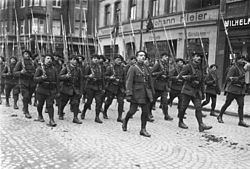
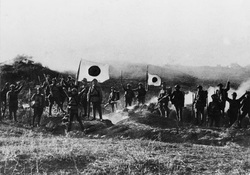
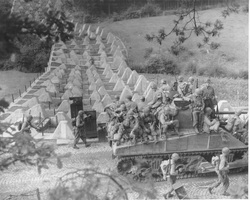
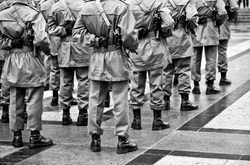
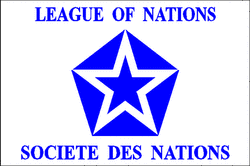
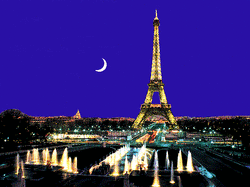
 RSS Feed
RSS Feed